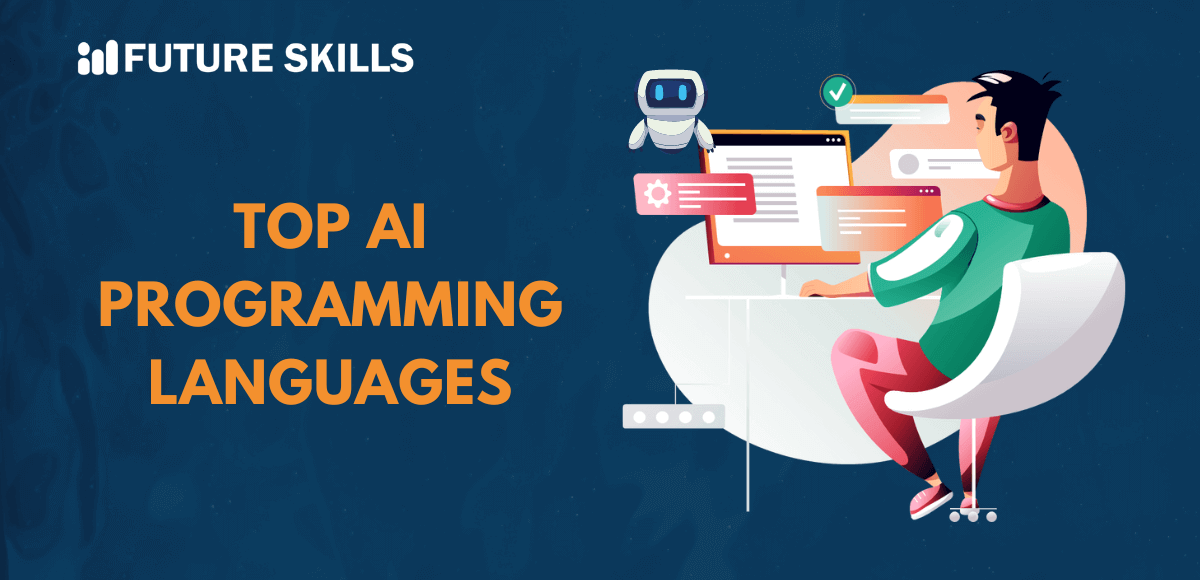Generative Adversarial Networks, which are commonly known as GANs, are a smart way of training generative models. The Generative Adversarial Networks GANs can add value when it comes to unsupervised learning. GANs have two sub-models – the generator and the discriminator models. The purpose of the generator is to create new examples, whereas the purpose of the discriminator is to classify examples into real or fake categories.
Today, Generative Adversarial Networks (GANs) have been identified as an evolving and exciting field in deep learning. By adopting the approach, it is possible to strengthen the capabilities of generative models and ensure they produce realistic examples. GANs are of high relevance across diverse problem domains, such as the translation of photos from day to night or winter to summer, etc. Generative adversarial network applications have been serving as extremely versatile tools that can support image synthesis, text-to-image synthesis and style synthesis. Now that you know – What are Generative Adversarial Networks (GANs)? It is time to dig deeper into the concept.
Embark on a transformative journey into AI, unlocking career-boosting superpowers through our Certified AI Professional (CAIP)™ Certification program.
How do Generative Adversarial Networks work?
Generative Adversarial Networks GANs function by training two neural networks. The objective is to make these two networks compete against each other so that more authentic and realistic data can be produced from the training dataset. For instance, with the help of GANs, you can develop new images from pre-existing images in an image database. Similarly, you can leverage the deep learning architecture to create original music from a database that consists of songs. These examples of Generative Adversarial Networks give insight into the high potential of the technology.
The fundamental purpose of GANs is to reach a level of realism by using a generator. The generator is made to learn how to generate a target output. The discriminator, on the other hand, is responsible for distinguishing true data from fake data that has been created by the generator. In Generative Adversarial Networks GANs, the generator basically attempts to fool the discriminator. The outcome of the competitive interaction between the two types of GANs neural network is the generation of realistic samples.
Level up your ChatGPT skills and kickstart your journey towards superhuman capabilities with Free ChatGPT Course.
Different Parts of Generative Adversarial Networks
The Generative Adversarial Networks can be fragmented into three distinguishing parts. You need to get an insight into these elements to understand how the innovative approach works. The three parts that make up GANs are generative, adversarial and networks.
Generative – Generative revolves around learning a generative model. It sheds light on how data is produced with respect to a probabilistic model.
Adversarial – It refers to setting up one component against another. In Generative Adversarial Networks applications, the comparison of the generative outcome with the actual image in the database takes place.
Networks – In GANs, deep neural networks play a key role. These networks serve as Artificial Intelligence algorithms that assist in the training activity.
Enroll now in the AI for Business Course to understand the role and benefits of AI in business and the integration of AI in business.
Application of Generative Adversarial Networks
Although the concept of Generative Adversarial Networks is fairly new, it has gained high attention. Despite being in its nascent stage, the use of GANs is of immense value in diverse domains and fields. Some of the main areas where GAN has established its presence are:
-
Image-to-Image Translation
One of the key areas where GANs have been playing a key role is image-to-image translation. The cutting-edge approach can be of immense value in transforming an input picture from a single domain to another while ensuring that its features remain the same. One of the common examples of Generative Adversarial Networks examples is transforming simple drawings into realistic pictures. Similarly, the technology can help to alter the creative style of a picture.
-
Data Augmentation
One of the main highlights of the GANs is that they are capable of augmenting present data. Yes, that is right! By making use of GANs, you can enhance the generalizability and robustness of machine learning models. This can be done by developing synthetic data samples.
-
Image synthesis as well as generation
The role of Generative Adversarial Networks is imperative when it comes to performing image or picture synthesis. It can also help in carrying out generation tasks. By leveraging the GANs approach, you can develop fresh pictures that are lifelike in appearance. This is possible as the generator GANs neural network is capable of mimicking the training data through distribution learning. The emergence of GANs has been a boon today. Thanks to this useful deep-learning architecture, it is possible to create high-resolution photographs, realistic avatars, and modernistic artwork.
-
Text-to-image synthesis
In recent times, the application of GANs has become quite common to carry out text-to-image synthesis. With the help of Generative Adversarial Networks, it is possible to develop visuals from descriptions that are given in the form of text. GANs can produce images and pictures by referring to descriptions in the form of textual input. For example, if you have a caption, you can create a relevant image by using GAN.
GANs have immense potential and promise. The fact that Generative Adversarial Networks can be used for diverse purposes increases its relevance and importance. In the deep learning universe, the emergence of GAN is like a breath of fresh air. It has brought about a revolutionary change in the training process.
Advantages of Generative Adversarial Networks
In order to get a holistic insight into the concept of GANs, it is essential to learn about their advantages. The advantages of GANs are what enable the approach to stand out in the deep learning realm.
-
High quality output
Undoubtedly, one of the main advantages of GANs is the high quality of the result. It is capable of generating realistic, and superior quality results in diverse forms like image synthesis, video synthesis, etc. It can achieve high levels of realism in its outcome. Moreover, it may be challenging for humans to distinguish between an actual image and the image that has been produced by GAN.
-
Generation of synthetic data
The GAN approach is capable of producing new and synthetic data. Furthermore, the data may share some kind of resemblance with certain known data distributions. Hence, GANs may be of immense value when it comes to data augmentation, creative applications, as well as detection of anomalies.
-
Smart way of unsupervised learning
In the domain of unsupervised learning, the emergence of GANs has been amazing news. This is because it is possible to train Generative Adversarial Networks in the absence of labeled data. In case you do not have labeled data or it is scarcely available with you, you can rely on GAN for training purposes.
Disadvantages of Generative Adversarial Networks
It is true that the Generative Adversarial Network is an amazing innovation that is full of possibilities. However, GAN has a number of disadvantages that you need to be aware of. Below are a few disadvantages that limit the effectiveness of GAN:
-
Instability in training
One of the most common concerns that arises in relation to GAN is that it is challenging to train. A number of challenges may arise during the training process such as instability risk, and collapse of the mode. Similarly, the inability to converge is another challenge that may arise during the training process.
-
Cost relating to computation
Cost is a chief factor that you need to take into account while adopting the GAN approach. A key thing to note is that GAN requires substantial resources. Arranging these resources may be a costly affair. Moreover, the fact that the training process may be time-consuming increases the challenge relating to high cost.
-
Possibility of bias and unfairness
Although Generative Adversarial Networks have amazing capabilities, you cannot ignore the fact that elements of bias may exist. The possibility of bias as well as unfairness may arise in GANs due to their presence in the training data. As a result, the ultimate result of GAN may be discriminatory in nature.
Both the advantages and disadvantages of GANs must be considered to answer the question – What are generative adversarial networks (GANs)? GAN has both good and bad features. The understanding of all attributes of GAN is fundamental to learning how it works in the deep learning arena.
Excited to understand the crucial requirements for developing responsible AI and the implications of privacy and security in AI, Enroll now in the Ethics of Artificial Intelligence (AI) Course.
Final words
Now you can know that Generative Adversarial Network is a unique approach to generative modelling. Within a short span of time, the approach gained massive popularity and introduction to GANs helps to understand how the generator and the discriminator models compete with one another. Some of the main application areas relating to GAN are Image-to-Image Translation, Data Augmentation, Image synthesis and generation and Text-to-image synthesis. Dive deeper in to the world of generative adversarial network and know the advantages and disadvantages of Generative Adversarial Networks help to understand the innovative concept in a comprehensive manner.






